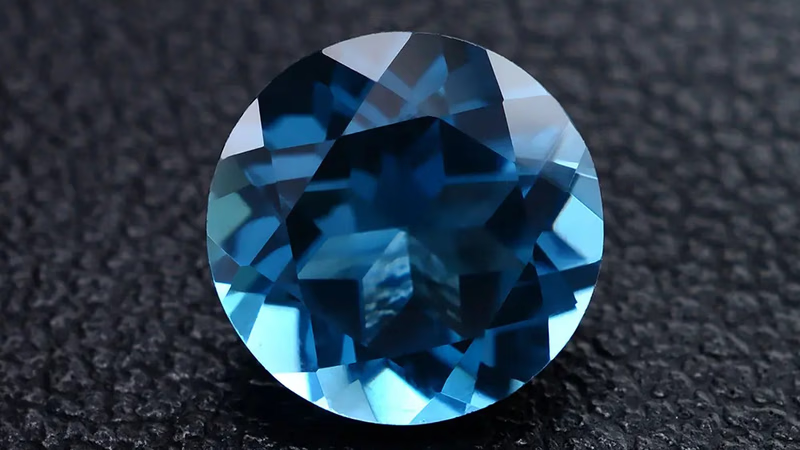
Topaz gemstones require careful storage and maintenance.
Store each topaz gemstone separately to prevent them from scratching each other or other gemstones. You can use small jewelry bags or soft cloth pouches to store individual stones. Topaz can be damaged by exposure to chemicals, so it's important to keep the gemstones away from household cleaners, perfumes, hairsprays, and other chemicals. These substances can dull the gemstone's luster or even cause discoloration. Extreme heat or rapid temperature changes can cause topaz to fracture or crack. It is advisable to avoid exposing the gemstone to direct sunlight for prolonged periods or storing it near heat sources like radiators or stoves.
If you are looking to buy delicate and unique jewelry, you can consider topaz stone as one of the options. Topaz stone with different colors has excellent light reflection and radiance and is used in many parts. One of the uses of topaz in the jewelry sector is in the manufacture of various necklaces, bracelets, and earrings but there are cases and questions when buying topaz jewelry, and certainly when buying jewelry.
Topaz is a Sanskrit word meaning fire and is known as a hard and semi-precious stone. Although topaz comes in a variety of colors, it is often found in light milky colors. Gold and yellow topazes are also available. Topaz has long been known as a precious stone. Many ancient civilizations believed that topaz was touched by the sun and turned yellow. Topaz is also mentioned several times in the description of the Garden of Eden in the Bible. For a long time, people considered topaz as a yellow gemstone, but with the beginning of special studies on topaz, scientists realized that topaz is available in red, blue, and even a few other colors.
Topaz has long been a symbol of love and affection. Many civilizations believe that the orange color of topaz is a symbol of passion and passion. Many also believe that the use of topaz ornaments can increase the freshness and sweetness in life. Topaz color change is also considered a symbol of love and passion that lasts forever.
You can use a solution of hot water and soap to clean the topaz and dry it with a cloth. Due to the hardness of topaz, it is important to keep it in a soft cloth. This will prevent the scaling of other stones that are less hard. Topaz itself is also protected from being scratched by harder stones such as diamonds and sapphires. Another thing to keep in mind is not to expose topaz to cosmetics, body sweat, chemicals, and foreign liquids that can damage the quality of the stone.
If your topaz gemstone becomes dirty or loses its luster, you can clean it using mild soap and warm water. Gently scrub the gemstone with a soft brush or cloth and rinse it thoroughly. Avoid using harsh chemicals or ultrasonic cleaners, as they can damage the gemstone. It's a good idea to have your topaz gemstones professionally cleaned and inspected by a jeweler. They can check for any loose settings or damage and give your gemstone a thorough cleaning to restore its brilliance.
-
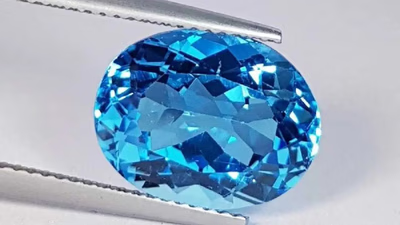
Topaz is a versatile gemstone available in various colors, each with unique properties. Blue topaz, often created through irradiation, is popular for its vibrant hues but is not found naturally. Yellow topaz, abundant and known for its clarity, ranges from pale to deep golden shades. The GIA color grading system categorizes topaz from colorless to black, with several shades including white, golden, pink, champagne, imperial, and magic topaz. White topaz is pure and colorless, while golden topaz includes yellow and orange tones. Pink topaz is rare and typically treated to enhance its color. Champagne topaz features natural brown shades without chemical enhancement. Imperial topaz showcases light peach to dark orange colors and is highly valued.
Magic topaz displays multiple colors due to chemical treatment and is also expensive. Each variety of topaz has distinct characteristics that influence its market value and desirability in jewelry.
-
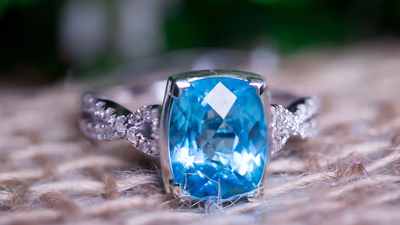
Color, clarity, and cut are the primary factors determining topaz quality. The intensity and saturation of color significantly influence desirability, with vibrant blue and pure pink being highly sought after. Clarity is assessed by the presence of inclusions and blemishes; topaz with minimal flaws is more valuable. Certain varieties, like imperial topaz, may have inclusions that enhance their appeal. Treatments such as irradiation or heat can alter color and clarity, impacting value; untreated stones are generally preferred. The cut of a topaz gemstone affects its brilliance and overall aesthetic, with common shapes including emerald, pear, and oval. While larger stones are rarer and often more valuable, exceptional smaller stones can also command high prices based on their quality attributes. Buyers should consider both the visual appeal and the craftsmanship of the cut when selecting topaz.
-

Topaz gemstones should be stored separately to avoid scratches and damage. Use small jewelry bags or soft cloth pouches for individual stones. Exposure to chemicals, such as household cleaners and perfumes, can dull the gemstone"s luster or cause discoloration. Extreme heat and rapid temperature changes can lead to fractures, so it"s essential to keep topaz away from direct sunlight and heat sources. Topaz is a semi-precious stone available in various colors, including light milky shades, gold, yellow, red, and blue. Historically regarded as a symbol of love and affection, topaz is often used in jewelry like necklaces, bracelets, and earrings. To clean topaz, use a solution of hot water and soap with a soft brush or cloth; avoid harsh chemicals or ultrasonic cleaners that may damage the stone. Regular professional cleaning by a jeweler is recommended to maintain its brilliance.
-
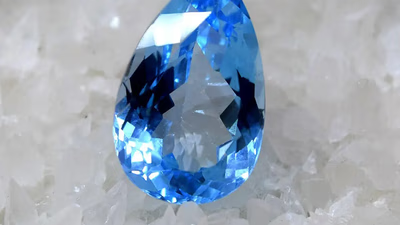
Topaz is mined in various regions worldwide, with Brazil leading in production, particularly in Minas Gerais. The country offers a spectrum of colors, including blue, pink, and yellow. Russia"s Ural Mountains are another significant source, known for high-quality topaz in colorless and pale hues. Nigeria"s Jos Plateau is recognized for its intense blue topaz, while Pakistan"s Shigar Valley produces notable pink varieties. Other countries like Namibia and Mexico also contribute to the global topaz market, with Namibia known for vibrant blue stones and Mexico for a range of colors associated with other gemstones. Sri Lanka and Australia have historical significance in topaz mining as well. The mineral forms in mountainous areas through volcanic activity and is often found alongside other gemstones. When purchasing topaz, factors such as color, cut, and clarity are essential to consider to ensure quality. "
-
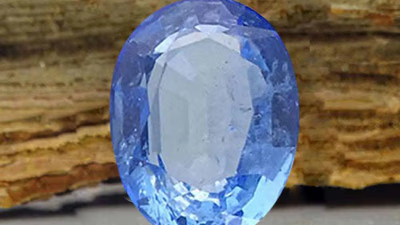
Irradiation and heat treatment are primary methods for enhancing topaz color. Irradiation uses high-energy radiation to transform colorless or pale topaz into various shades of blue, while heat treatment alters yellow, orange, or brown stones into durable pink hues. Coating is a temporary method that applies a colored film to the surface, creating effects like iridescence but is not long-lasting. It"s crucial for sellers to disclose any treatments applied to topaz, as natural variations are also highly valued. The article highlights the importance of recognizing treated versus untreated stones and notes that many blue topazes on the market are heat-treated colorless varieties from Nigeria and Sri Lanka. Additionally, it warns against confusion with other gemstones like citrine and aquamarine, which can be misrepresented as topaz. The rarity of natural pink topaz and the value of golden topaz are also discussed, emphasizing the need for informed purchasing decisions. "





